“Is my surface design portfolio ready?” ← I constantly get asked this in my DMs and inbox and I completely understand. Because without a good art portfolio, you don’t have a chance at making an income from art licensing or any other design income stream you choose.
But your portfolio isn’t the only (or first) thing you need to consider if you want to have a long-term career in this industry. So today, I’m discussing the five key ingredients that will help ensure you have a stronger start in surface design.
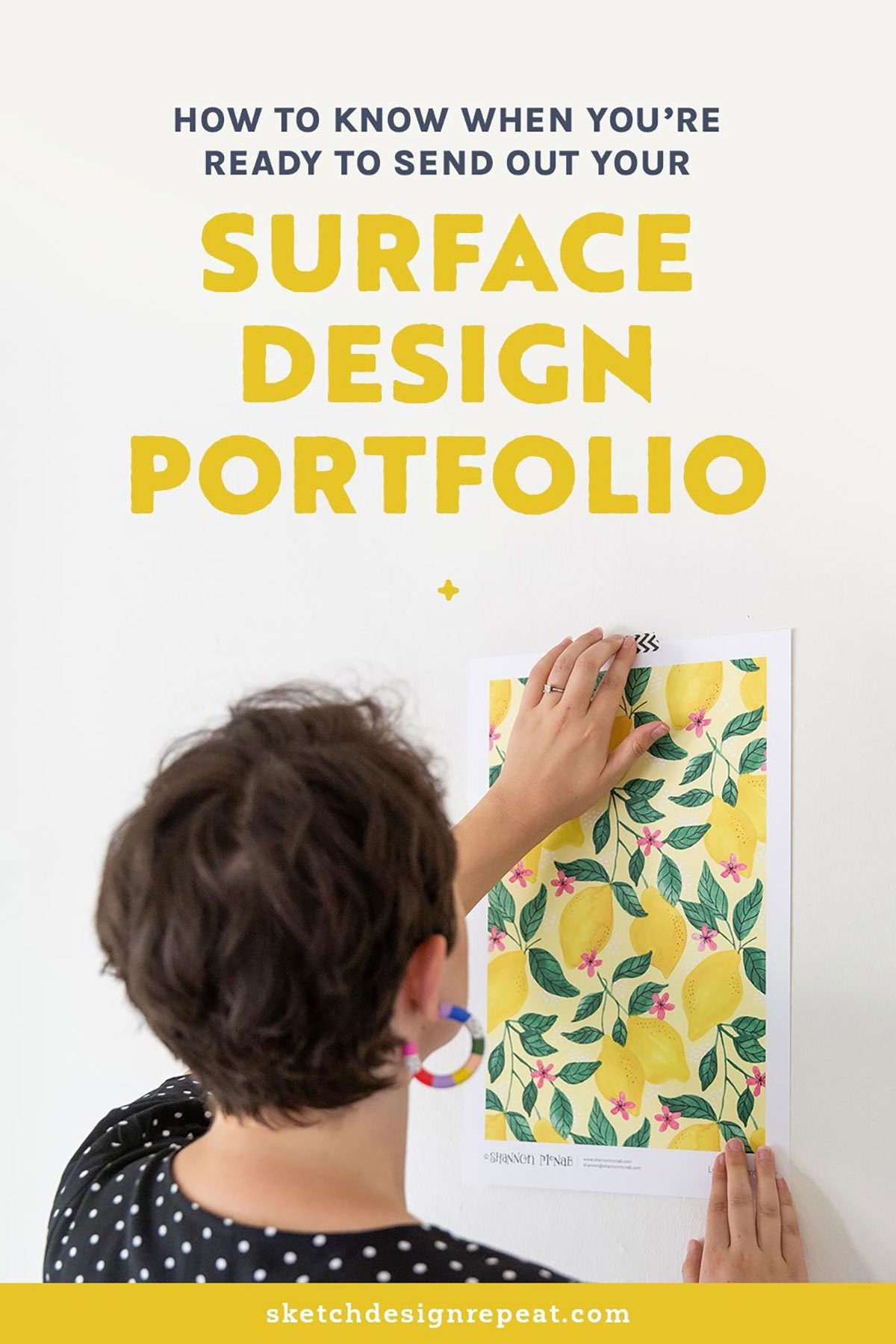
Quick Note: A few links in this post are affiliate links. If you purchase something after clicking, I may receive a small commission. But please know I never recommend something I haven’t personally used.
1. You’ve Developed a Semi-Consistent Design Habit
This first step is crucial because regularly creating new art is the foundation of a strong surface design career. Doing so not only gives you a reason to continue emailing art directors with your continually growing art portfolio, but it helps you develop a strong art-making muscle as well.
The truth is there’ll be weeks or months when you won’t feel like designing, but if you develop a regular design habit early, when your time is limited or you have a creative drought (like I did for almost all of 2020), it won’t be as difficult to pick up your pencil and start again.
When I say “consistent,” I want to make it clear that I’m not suggesting you have to create something for your portfolio every single day.
Because as much as we all love those #100dayprojects we start, life inevitably gets in the way, our motivation wanes, and then we feel guilty for not sticking with it. Instead, I’d suggest developing your own design frequency by deciding how much art you can realistically make.
For some artists, that may be designing 3 pieces a week but for others, 3 new portfolio designs per month would be more realistic. So take some time and think about how many hours it typically takes for you to complete a design and set your goal accordingly.
Still, if you want some advice on where to start…
If you’re still developing your drawing skills, sketching one motif 5 times a week is a good beginning. Because while you can technically become a surface designer without strong drawing skills (or painting if that’s more your jam), it’ll be much harder to grow your career without them. And if you need help deciding what to draw, our daily drawing challenge has 600+ motif prompts for you.
But if you’re somewhat confident in your drawing skills and looking to build your art licensing portfolio, I’d suggest creating 1 finished design per week. Then after a month you can evaluate how you feel and if you want to increase or decrease your pace.
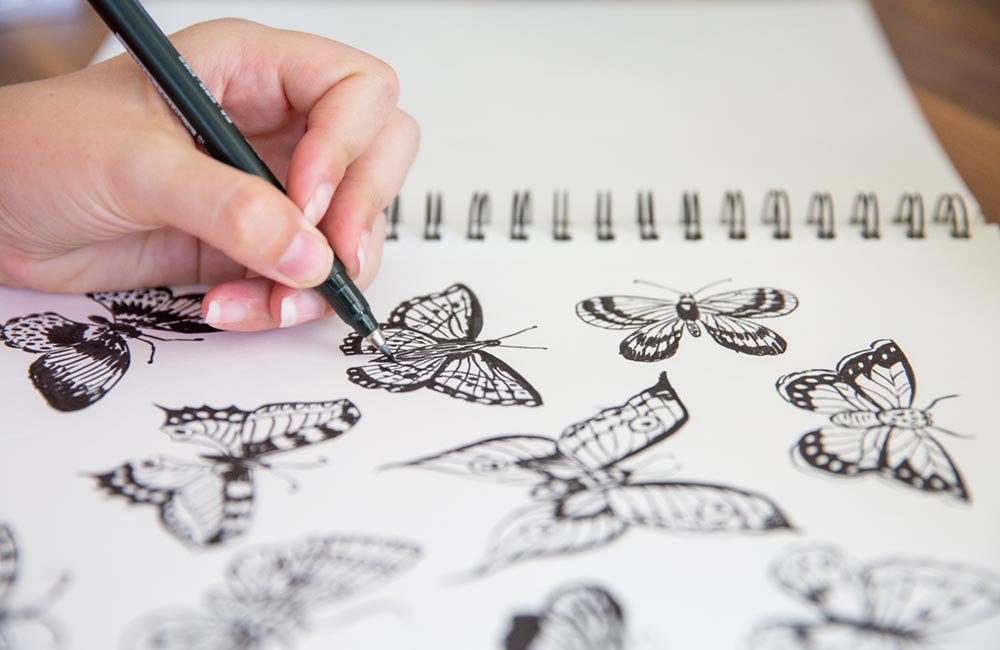
SUGGESTED CLASS: Sketching for Surface Designers available on Skillshare
2. You Know How to Create Seamless Repeat Patterns
While you can submit implied repeat patterns to companies, understanding how to make seamless repeats is an essential skill. Most art directors will assume you can, so if you don’t and it comes up when they ask for changes to a submitted design or during negotiations for a freelance surface design job, it’ll be a lot harder for them to take you seriously as a designer.
Beyond surface pattern design, another useful skill is to understand how to create finished illustrations.
Because while some companies only use patterns and maybe some spot illustrations, many prefer fully developed “hero” illustrations.
It’s something I struggled with when I made the switch from scrapbook design as I only created spot illustrations. So my main focus during my first two years as a surface designer was developing my illustration skills and it’s made me a much stronger designer. Just look at the progression of my first 4 years below.
Now that doesn’t mean that you shouldn’t move forward if you don’t know how to create complex half drop repeats or haven’t fully developed illustration skills (from that first image below you can see I obviously didn’t), but it is something worth working on as you build your career.
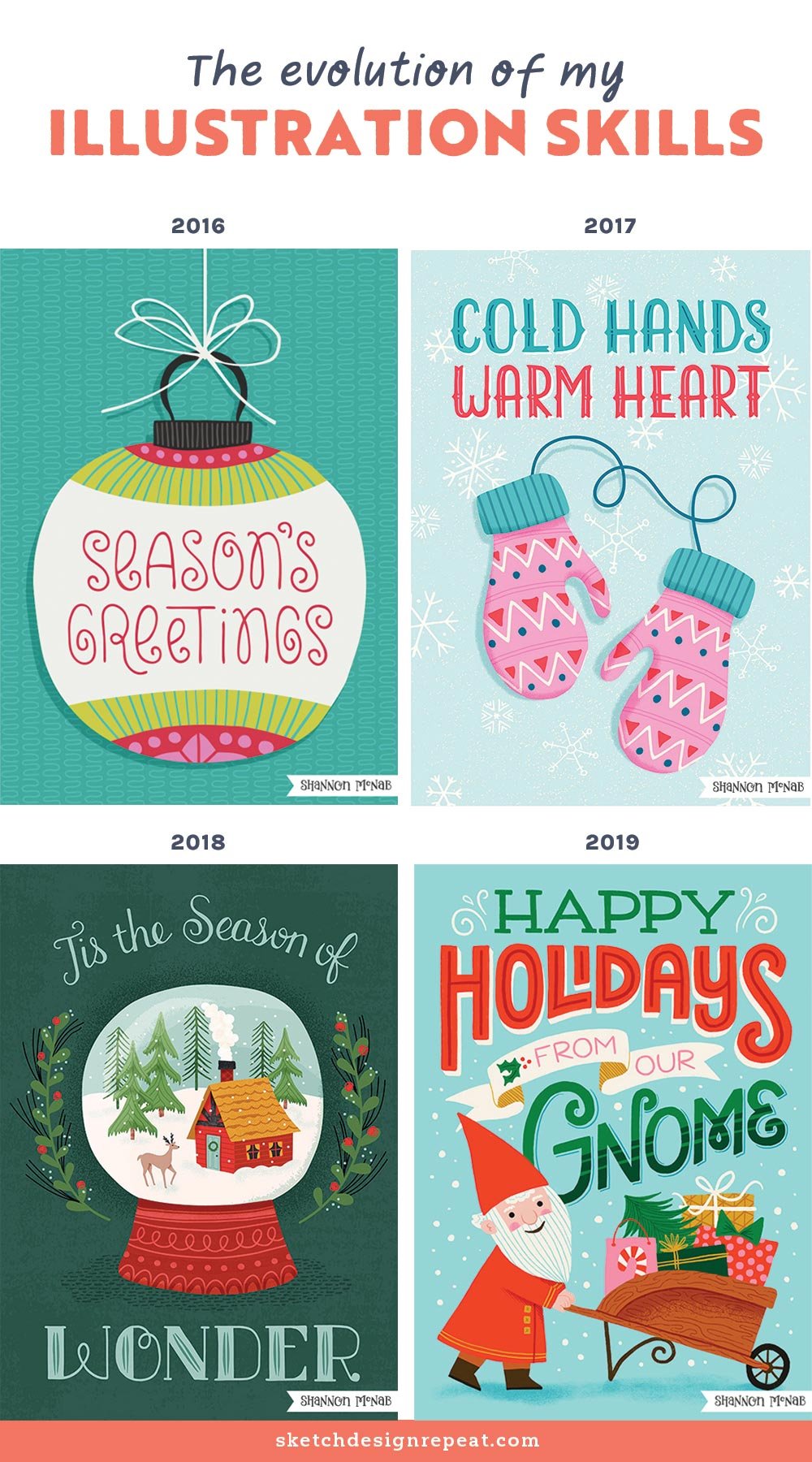
3. You’re Familiar with at Least One Design Program
Similar to the last tip, it’s important to be fluent with surface design industry software, otherwise, you may struggle when it comes to handing over design files to companies or working with them on freelance projects.
That’s not to say you need to know how to use them all – I’d suggest starting off with one program and getting really familiar with it before moving on to another.
Which design program you use is entirely up to you (despite popular advice that there’s only one program you should use), but the gold standards in the industry are still Adobe Photoshop and Adobe Illustrator. Now, I know these programs are complex and constantly changing. And yes, Adobe’s Creative Cloud is expensive.
But if you’re hoping to make surface design your full-time career, taking it seriously as a job and investing in yourself is important.
Still, you may decide to use other popular (and cheaper) programs at the start like Procreate or Affinity Designer and that’s ok! Just be sure to keep your files tidy, labeled, and layered that way when you export them to PSD or AI for a client, there’ll hopefully be minimal issues with them using your file.
4. You Have an Online Presence Somewhere
We all know it’s not 1990 anymore, which means just having a physical portfolio doesn’t cut it anymore. Potential clients need a way to view your art easily and that means having your portfolio somewhere online.
That doesn’t mean you need a big, fully loaded website. In fact, if you’re just starting out, I’d actually suggest you don’t as it’ll be just another item on your to-do list that’ll keep you procrastinating on.
But I also think it’s important to have your art somewhere other than just Instagram (see tip #2 of this marketing for introverts article if you want to hear why).
So my advice is to start simple and choose a platform that works for you.
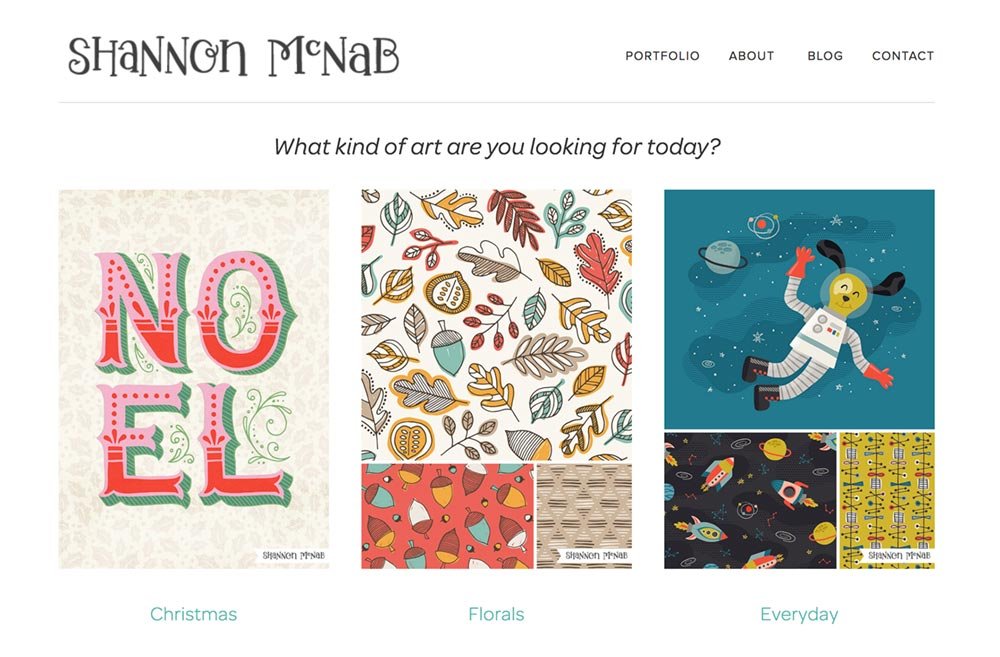
My portfolio website in 2018 – it was simple and straightforward.
If you’ve never built a website before, I’d suggest using a portfolio site like Behance or sign up for a free portfolio account at Artonomo. Because with these platforms, all you have to do is set up a profile and upload your art.
However, if you’re a bit web-savvy or want something you have full control over, I’d recommend creating a website using Squarespace. If you want lots of customization, use the 7.1 version that has lots of options and slick features. But if you’re easily overwhelmed when given 40 options, I’d suggest the Avenue legacy template from their 7.0 version instead (as it’s a lot less daunting to use).
No matter what, remember you can keep it simple!
5. You Have a Small Portfolio of Completed Designs
One of the things that frustrates me the most is when I see artists struggling to build art income because they believe (or were told) they need to create a massive body of work before they can start. But the truth is you need far less artwork than you think.
If you have at least 10 designs you’re proud of… you’re ready to start!
I know you might still be skeptical at such a low number of designs but I say this because used to be where you are. When I got started in surface design, I was told I needed 100 designs before I could license my work to companies. At the time, I only had 15 designs in my portfolio and as a slow designer, thinking about completing 100 designs was incredibly discouraging.
But instead of giving in to the bad advice, I decided to ignore it: I started pitching to companies, went to Surtex, snagged some great art licensing contracts, and all the while, continued to build my portfolio.
It took me 18 months from the time I started before I finally surpassed 100 designs in my surface design portfolio. If I’d waited like I was told, I would have lost out on dozens of company contacts, 20+ licensing deals, and around $15k in income.
So if you already have a small portfolio of work you like, wouldn’t you rather just get started with what you have?
Or do you want to wait until your designs are perfect (psst…there’s no such thing), losing out on developing relationships with companies, possible licensing deals, and earning income from your art?
Hopefully, you’re convinced to go with the latter
There you have it – my best advice to you on knowing when to start your surface design career. Once you’ve:
-
Developed a semi-consistent design habit…
-
Know how to create seamless patterns…
-
Are familiar with at least one design program…
-
Have some type of online presence…
-
and have at least 10 portfolio designs…
You’re ready to start pitching your portfolio to companies!
But I know you may not know where to start looking for companies to pitch to or are confused and scared to reach out to art directors because you don’t want to say the wrong thing or annoy them. Still, nothing will ever change if you don’t move out of your comfort zone of continually designing and just hoping companies will discover you.
And it’s why I developed our signature course, Pitch Your Portfolio, to help you actually move forward in your career. Inside, I’ll give you a complete road map for organizing and preparing your art, finding companies that are a good fit for you, and sending your art to the people who matter with confidence.
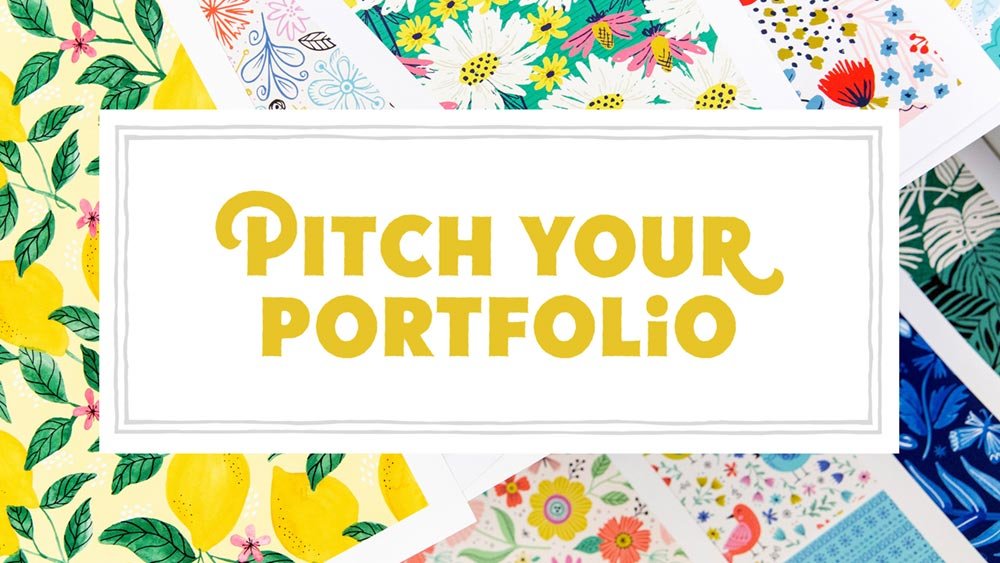
If you’re interested in joining the 350+ students — many of whom have gone on to gain agent representation, secure their first (or multiple) licensing deal/s, and start gaining decent income — just click below.